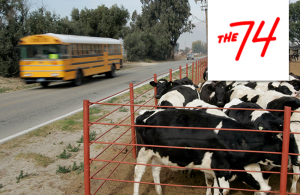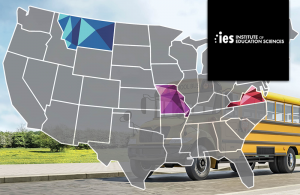Enhancing the Capacity of Rural Schools to Identify, Prevent, and Intervene in Youth Mental Health Concerns
Our Purpose
IDENTIFY. PREVENT. INTERVENE.
In partnership with rural schools, we will develop a comprehensive set of teacher and student surveys, tools, interventions, and professional development materials to help identify, prevent, and intervene in mental health concerns among students.
What will participation for rural school partners look like?
1 Partnership Development
Year 1: Be active partners in the development of tools and materials
2 Expansion of the Early Identification System
Years 2 and 3: Provide input and feedback on the Early Identification System and other materials developed through the Center
3 Evaluation of the Early Identification System Model
Years 4 and 5: Help evaluate the impact of the Early Identification System on students’ academic, social, emotional, and behavioral outcomes Ea, consequatur.

Rural communities are incorrectly perceived as having fewer mental health needs given their small populations and low residential density. This along with their geographic isolation and scarce resources has resulted in limited mental health service options for rural youth and their families.

Nearly 20 percent of school-age children experience serious mental health issues yet few receive services, a situation exacerbated in rural settings.
Rural communities are incorrectly perceived as having fewer mental health needs given their small populations and low residential density. This along with their geographic isolation and scarce resources has resulted in limited mental health service options for rural youth and their families.
In The Media

How Schools Can Help Bridge the Mental Health Care Gap for Rural Students
As children across America return to the classroom this fall, the reality is that those in rural communities will face

Building Partnerships to Support Mental Health Needs in Diverse Rural Schools
About 1 in 5 school-age children experience serious mental health issues yet few receive services. In rural schools, geographic isolation

KBIA’s Thinking Out Loud Interview with Wendy Reinke, PhD
KBIA’s Lee Wilkins talks with Wendy Reinke of the new National Center for Rural School Mental Health at the University
How Schools Can Help Bridge the Mental Health Care Gap for Rural Students
As children across America return to the classroom this fall, the reality is that those...
⇨Building Partnerships to Support Mental Health Needs in Diverse Rural Schools
About 1 in 5 school-age children experience serious mental health issues yet few receive services....
⇨KBIA’s Thinking Out Loud Interview with Wendy Reinke, PhD
KBIA’s Lee Wilkins talks with Wendy Reinke of the new National Center for Rural School...
⇨


